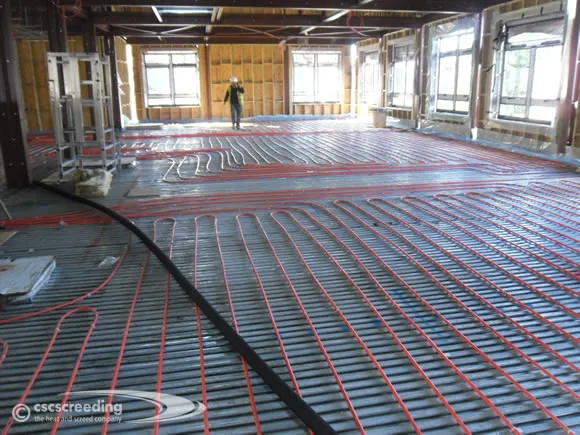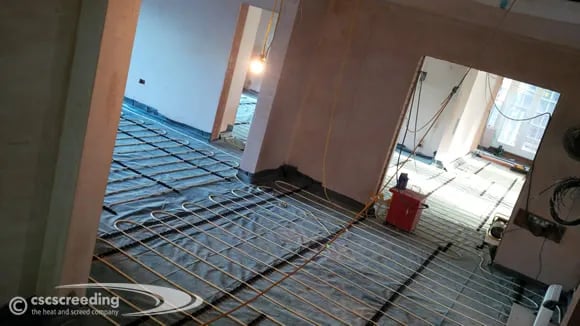
Plan screeding and underfloor heating projects carefully
The type of screed, the under-floor heating (UFH) system, and the work breakdown structure are the most essential elements a screeding contractor should consider before installing screeds. Since there are many types of screeds available today, choosing the right product depends not only on the final purpose of the area, but also on the complexity and specifications of the construction project. A few elements to consider include ambient weather conditions, bay sizes, day joint locations, surface regularity, and type of screed needed.
The first thing a screeding contractor must do is to gather information about the floor finish, load expected, drying time, project timescales, and co-create a plan together with the constructor. Then, he must measure the area to be screeded, ensure that it is watertight, determine bay sizes, conduct level surveys for assessing the departure from datum of concrete, and estimate logistics, labour, and equipment needs. As soon as he completes all these tasks, he must select the right screed mixture for the project, determine screed thickness, calculate the volume of screed needed, decide if reinforcement is required, and establish the most appropriate surface finish for the final floor. If the project includes UFH, the screeder needs to ensure adequate compaction around heating pipes for efficient thermal conductivity.

Laying and installing underfloor heating takes careful planning and execution.
The most common types of screeds used in UFH projects are the traditional, fast-drying and free-flowing screeds. While traditional screeds must be installed to a minimum depth of 75mm, some fast drying screed products will allow a minimum depth of 55mm over UFH. Free-flowing screeds can be installed at a minimum depth of 41mm based on 16mm pipe. Once installed, the screed must be cured and dried according to the manufacturer’s instructions. If the screed is not completely dried and heat is applied, there is a high risk of screed damage. Under no circumstances should the UFH system be used to accelerate screed drying times for cement-based screeds.
One thing is for sure: when it comes to screeding, there are no short cuts to achieving the perfect result. Careful planning and attention to detail are key prerequisites for project success.
Fortunately, the experts working at BuilderScreed are ready to offer you all these things. Further, they are able to accommodate unique requirements and unexpected changes that may occur during a construction project. Specialised knowledge along with extensive experience in screeding and UFH has brought BuilderScreed an excellent reputation throughout the screeding industry, turning it into the best service alternative for getting the perfect floor.
